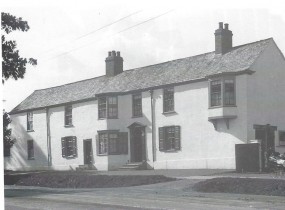Blossom St, The Mount and Tadcaster Rd
The past and present pubs in this area are, unlike those in my other two areas, dominated by historic inns, most of which are first recorded in the 18th century, although, as noted earlier, some may have existed before then.
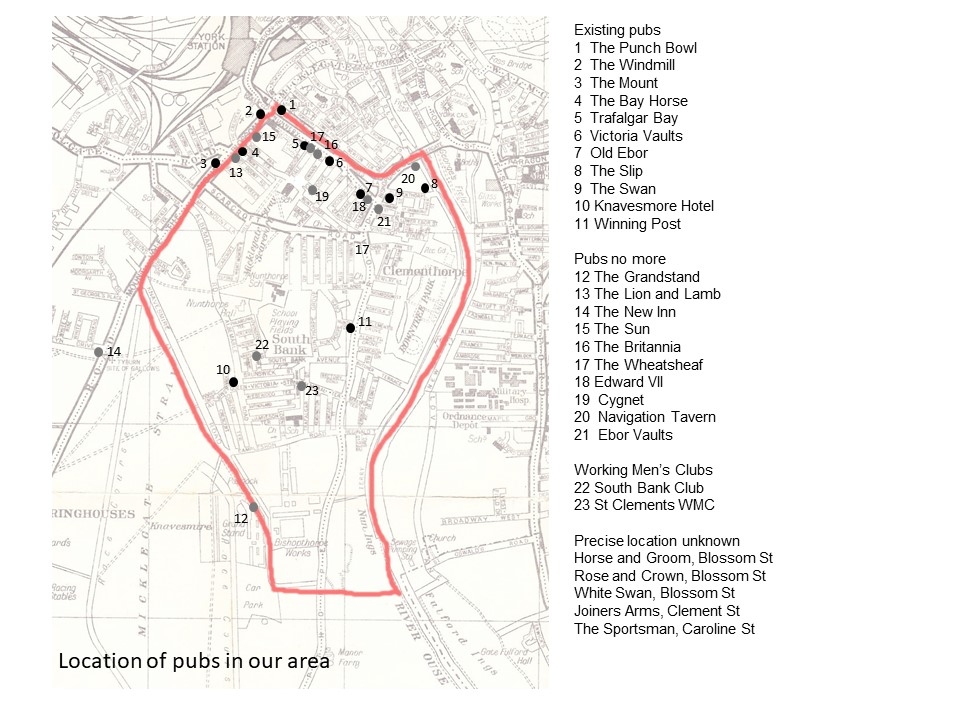
Pubs that remain
The Punch Bowl in Blossom St/Nunnery Lane. Briefly known between 1822 and 1825 as The Fox and Hounds, this was first recorded in 1783. Originally an inn, it is tucked in very close to the city walls near Micklegate Bar. It stands on the site of the former St Thomas’ Hospital, founded in the late 14th century to help the poor. Among other things it would have provided the poor with food and drink, quite probably including ale. If so, this site has a long history of making alcohol available to at least some of the public. The pub is now part of the Wetherspoon’s chain and food is a major feature (as it is in many of our pubs). There are records of it being used in the 19th century for inquests. The Punch Bowl has expanded twice, firstly in 1895, into a cab office next door and in 1974 into a butcher’s premises in Nunnery Lane. In 1811 a seven-year lease on the pub was granted for £42 and 12 shillings - £42.60p or £3,500 in today’s values. That is £500 a year, so to us a bit of a bargain!
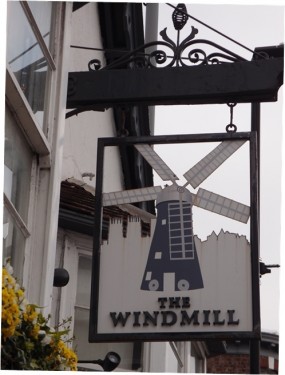 The Windmill in Blossom St. This also was an inn, first recorded in 1769. Press records reveal frequent use for sales of livestock and property. In 1893 it still had its own brewhouse but was then bought by a commercial brewer, Brett Bros., who had a brewery in Spurriergate. They paid £3,750 for the pub, which is a fairly substantial £474,000 in today’s money. Even by 1902 it still had 16 letting bedrooms. By the 1970s it became part of the then well-known Berni Inn steakhouse chain and food still remains a major feature. The Windmill’s pub sign is worth a mention in an era when the quality of such signs has declined. This one merits praise for clearly portraying the preserved Holgate windmill in York. That is evident from various features, including its unusual set of five sails.
The Windmill in Blossom St. This also was an inn, first recorded in 1769. Press records reveal frequent use for sales of livestock and property. In 1893 it still had its own brewhouse but was then bought by a commercial brewer, Brett Bros., who had a brewery in Spurriergate. They paid £3,750 for the pub, which is a fairly substantial £474,000 in today’s money. Even by 1902 it still had 16 letting bedrooms. By the 1970s it became part of the then well-known Berni Inn steakhouse chain and food still remains a major feature. The Windmill’s pub sign is worth a mention in an era when the quality of such signs has declined. This one merits praise for clearly portraying the preserved Holgate windmill in York. That is evident from various features, including its unusual set of five sails.
The Mount, on The Mount. First recorded in 1838, this pub does not seem ever to have been an inn. Its early status is unclear, but it would either have been a pub with a full licence or a beerhouse. First known as The Saddle it was rebuilt in 1891, to be bought by John Smith’s brewery in 1892 when its name was changed to The Mount.
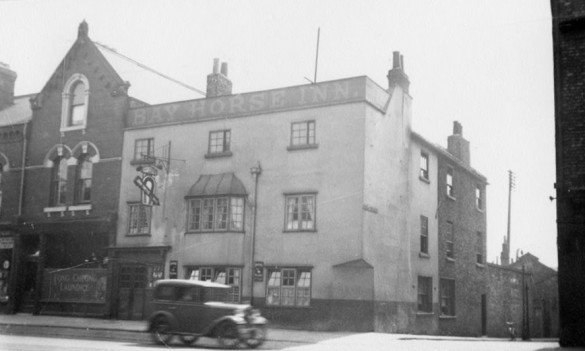 The Bay Horse in Blossom St. This is one of twenty-five pubs in York recorded with that name! It was an inn, first recorded in 1748. As was then common its name comes from a famous racehorse - the Bay Malton - which won a major race in 1766. That implies an earlier name, but I am unaware of one. A plaque on the outside is devoted to a breed of horse called The Cleveland Bay – perhaps that is a clue? Curiously, this pub was owned from 1862 to 1874 by The Bar Convent just up the road. This came about because the convent had lent money to a man trying to set up a building business. That business failed and the man’s assets were divided up amongst his creditors. He had previously bought the pub which was then passed on to the convent to settle their debt. The pub was put up for sale by the convent in 1863, when it was listed as having its own brewhouse. Worth noting is that the convent also had its own brewhouse, at least up to the 17th century, but (in theory at least) its beer was purely for consumption by the nuns. The Bay Horse was restored by John Smith’s Brewery in 1969 and is now a listed building. A photograph taken in the 1920s shows that at some later date the three upper story windows were bricked over.
The Bay Horse in Blossom St. This is one of twenty-five pubs in York recorded with that name! It was an inn, first recorded in 1748. As was then common its name comes from a famous racehorse - the Bay Malton - which won a major race in 1766. That implies an earlier name, but I am unaware of one. A plaque on the outside is devoted to a breed of horse called The Cleveland Bay – perhaps that is a clue? Curiously, this pub was owned from 1862 to 1874 by The Bar Convent just up the road. This came about because the convent had lent money to a man trying to set up a building business. That business failed and the man’s assets were divided up amongst his creditors. He had previously bought the pub which was then passed on to the convent to settle their debt. The pub was put up for sale by the convent in 1863, when it was listed as having its own brewhouse. Worth noting is that the convent also had its own brewhouse, at least up to the 17th century, but (in theory at least) its beer was purely for consumption by the nuns. The Bay Horse was restored by John Smith’s Brewery in 1969 and is now a listed building. A photograph taken in the 1920s shows that at some later date the three upper story windows were bricked over.
Pubs that have gone
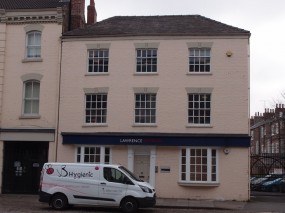 The Lion and Lamb in Blossom St. An inn first recorded in 1783. Even in the railway age of 1884 a press advert reveals that it retained stabling for ten horses. Another press advert of 1888 shows that someone giving this pub as their address was looking to buy a “Light modern omnibus, carry 14 inside”. Was this the landlord? If so, what did he want with a (horse drawn) bus? Possibly it was to run pub outings or take customers to the racecourse just up the road. The pub was used for inquests, and one sad story is worth repeating. In 1858 a man fell from his horse-drawn vehicle, which then ran over and broke his leg. The man called for a surgeon and then got into the nearby Lion and Lamb, where he plainly had a skinful. Somehow, he got hold of another vehicle and drove off into York, where he again fell off, to be run over - this time with fatal results. His body was taken back to the Lion and Lamb, where an inquest jury recorded a verdict of accidental death. As well as use by the coroner, there are records of frequent use for auctions and sales. The pub changed its name to The Nickel and Dime in 1987 but closed for good the following year, to be converted into offices.
The Lion and Lamb in Blossom St. An inn first recorded in 1783. Even in the railway age of 1884 a press advert reveals that it retained stabling for ten horses. Another press advert of 1888 shows that someone giving this pub as their address was looking to buy a “Light modern omnibus, carry 14 inside”. Was this the landlord? If so, what did he want with a (horse drawn) bus? Possibly it was to run pub outings or take customers to the racecourse just up the road. The pub was used for inquests, and one sad story is worth repeating. In 1858 a man fell from his horse-drawn vehicle, which then ran over and broke his leg. The man called for a surgeon and then got into the nearby Lion and Lamb, where he plainly had a skinful. Somehow, he got hold of another vehicle and drove off into York, where he again fell off, to be run over - this time with fatal results. His body was taken back to the Lion and Lamb, where an inquest jury recorded a verdict of accidental death. As well as use by the coroner, there are records of frequent use for auctions and sales. The pub changed its name to The Nickel and Dime in 1987 but closed for good the following year, to be converted into offices.
The New Inn in Tadcaster Rd, an inn first recorded in 1731, making it one of our earliest. I say ‘ours’ but from the map you can see that it's just out of our area. I only established this some way into my project and, as this pub was so interesting, was reluctant to let it go, so there it stays! My apologies to the Dringhouses group to whom it truly belongs. This pub began life as The New Inn but then became the splendidly named Gallows House. It got that name because it was close to the Tyburn on the Knavesmire, where, in the days of public executions, criminals were hanged. Presumably much of the pub’s trade came from those witnessing these spectacles and we may be sure that it did a roaring trade one day in 1739 when Dick Turpin was hanged! Some, possibly unreliable, sources have it that those condemned to die were first taken to this pub for a calming drink. One report, sadly almost certainly untrue, states that one felon was denied a drink before being hanged only for a reprieve to arrive seconds later! At some point the building was divided into two with one half being used as kennels for the Ainsty Hunt and the other as a starch factory and/or a laundry. A pub opened up again in the building in 1855 and was called The White House (pic5). It closed for good in 1858 and the building was demolished in the 1950s or 60s but name lives on in the nearby White House Gardens.
The Sun, on The Mount was also called at various times The Boar or The Star. A pub called The Boar was recorded in the York area in 1485 but, while certainty is lacking, this was very probably a pub of the same name in Castlegate. If it was our pub then it would easily be our oldest recorded one. It was located just opposite where Holgate Rd joins Blossom St, but it was closed and demolished in 1857, to allow for the creation of East Mount Rd at its junction with Blossom St.
The Horse and Groom in Blossom St. All I know about this pub is that it closed in 1765. Given the date and location, quite probably an inn.
The Rose and Crown in Blossom St. Again, almost no information beyond that it was unoccupied by 1763. Also, probably an inn.
The White Swan in Blossom St. Probably an inn and yet another where little is known, but it was recorded in 1733, which makes it our first recorded pub.
The Grandstand, on the Knavesmire. An inn first recorded in 1811. I assume it was set up to accommodate horse racing folk but is marked as ‘PH’ (ie Public House) on the OS map of 1892, so presumably it was open to the public. By 1902 it no longer let out rooms and its licence was allowed to lapse by 1911.


